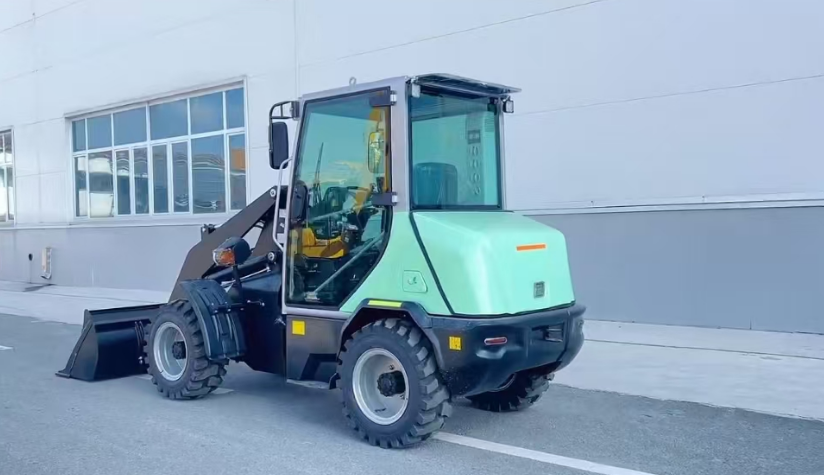I. Introduction
Wheel loaders, indispensable tools in construction, mining, and agriculture, are powerful machines capable of handling heavy loads. However, their power comes with a caveat: the risk of tipping over if overloaded. Understanding the concept of tipping load is crucial for safe and efficient operation.
Tipping load refers to the maximum weight a wheel loader can carry without becoming unstable and tipping over. It's a critical parameter that determines the machine's operational limits. By comprehending the factors influencing tipping load and adhering to safe operating practices, operators can significantly reduce the risk of accidents and maximize productivity.
This article delves into the intricacies of tipping load, exploring its factors, calculation methods, and impact on wheel loader safety.

II. Understanding Tipping Load
The Mechanics of Tipping
When a wheel loader is loaded, the weight distribution shifts, potentially causing the machine to become unstable. The tipping load is reached when the moment of the load overcomes the machine's stabilizing forces.
Factors Influencing Tipping Load
Several factors contribute to a wheel loader's tipping load:
- Wheelbase and Track Width: A wider wheelbase and track width provide greater stability.
- Counterweight: A heavier counterweight helps to balance the load and prevent tipping.
- Tire Size and Inflation Pressure: Proper tire inflation ensures optimal load-bearing capacity and stability.
- Ground Conditions: Soft or uneven ground can reduce stability.
- Operator Skill and Technique: Experienced operators can maneuver the machine safely, even in challenging conditions.
III. Calculating Tipping Load

Static Stability Analysis
This method involves calculating the tipping load based on the machine's geometry, weight distribution, and center of gravity. It's a relatively simple approach but may not account for dynamic factors.
Dynamic Stability Analysis
This more complex method considers factors like acceleration, braking, and turning, which can significantly impact stability. It requires advanced engineering techniques and software.
Manufacturer's Specifications
Wheel loader manufacturers provide specific tipping load limits for their machines, which are based on rigorous testing and calculations.
IV. Tipping Load and Wheel Loader Safety
Importance of Maintaining Safe Operating Loads
Exceeding the tipping load can lead to catastrophic consequences, including:
- Property Damage: Tipped machines can damage equipment and infrastructure.
- Injury or Fatality: Operators and bystanders can be seriously injured or killed in tipping accidents.
- Environmental Damage: Spilled materials can contaminate soil and water.
Safety Measures to Prevent Tipping
To minimize the risk of tipping, operators should:
- Receive Proper Training: Understand the machine's capabilities and limitations.
- Inspect the Machine Regularly: Check for tire pressure, hydraulic fluid levels, and structural integrity.
- Distribute the Load Evenly: Avoid overloading one side of the bucket.
- Avoid Hazardous Terrain: Stay away from slopes, soft ground, and other unstable surfaces.
- Use Caution When Turning: Reduce speed and avoid sharp turns, especially with heavy loads.
V. Case Studies
Numerous accidents have occurred due to tipping load violations. By analyzing these incidents, valuable lessons can be learned:
-
Case Study 1: Construction Site Accident
- A wheel loader tipped over while loading a truck on a slope.
- Analysis: The operator exceeded the tipping load limit and failed to account for the slope's impact on stability.
-
Case Study 2: Mining Operation Incident
- A wheel loader tipped over while dumping a load of ore.
- Analysis: The machine was overloaded and the ground conditions were unfavorable.
VI. Future Trends and Innovations
To further enhance wheel loader safety, the industry is exploring various technological advancements:
- Advanced Stability Control Systems: These systems can monitor the machine's stability and automatically adjust hydraulic pressure to prevent tipping.
- Intelligent Load Monitoring: Sensors can continuously monitor the load weight and alert the operator if the tipping limit is approached.
- Autonomous Wheel Loaders: Self-driving machines can be programmed to avoid hazardous conditions and operate within safe load limits.
Tipping load is a critical factor that can significantly impact the safety and productivity of wheel loader operations. By understanding the factors influencing tipping load, calculating it accurately, and adhering to safe operating practices, operators can minimize the risk of accidents and maximize the efficiency of these powerful machines. As technology continues to advance, we can expect even safer and more intelligent wheel loaders in the future.
Post time:Nov.07.2024
